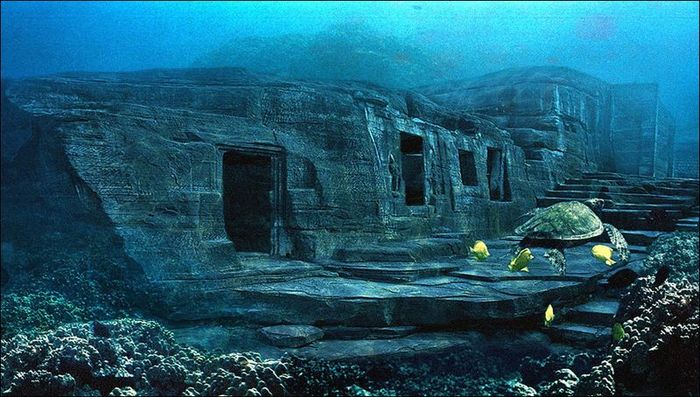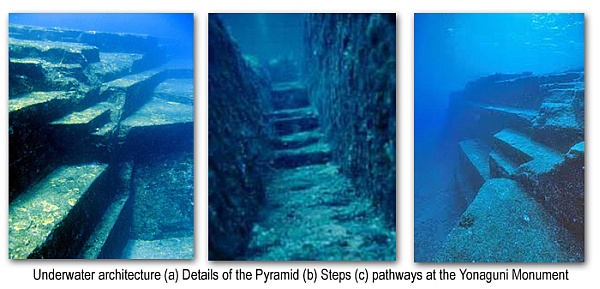The Yonaguni Monument is a massive underwater rock formation off the coast of Yonaguni, the southernmost of the Ryukyu Islands, in Japan.
While many archaeologists and geologists believe that it is a natural formation, some hold the view that some of its features are man-made (being that impossible, would suggest extra terretrial intervention).
In 1986, a diver near the island of Yonaguni Jima, off the southern tip of Japan (around Okinawa) came across some strange structures about 25 metres below sea level.
They appeared to be stepped structures with terraces and ramps.
One of the largest pyramid structures is 600 feet wide and 90 feet high –with five separate levels of stone blocks with what appears to be road surrounding the structure.
Tool marks and carvings have been discovered upon the stones (and documented) which indicate that they have were constructed rather than being natural stone structures.

Others have estimated that the structure is far older – including Teruaki Ishii, professor of geology at Tokyo University who determined that the submergence occurred at the end of the last ice age – which was around ten thousand years ago (over twice as old as the pyramids in Egypt) – If this is the case, then our history books would have to be revised to take into account an advanced Eastern culture, more advanced than any early Western culture.

It is interesting to note that a number of tools have been discovered both on land and in the sea around the structures. Close to the pyramid structure, what is thought to be the carving of a human head has been discovered (several feet tall), along with numerous unknown hieroglyphs.
